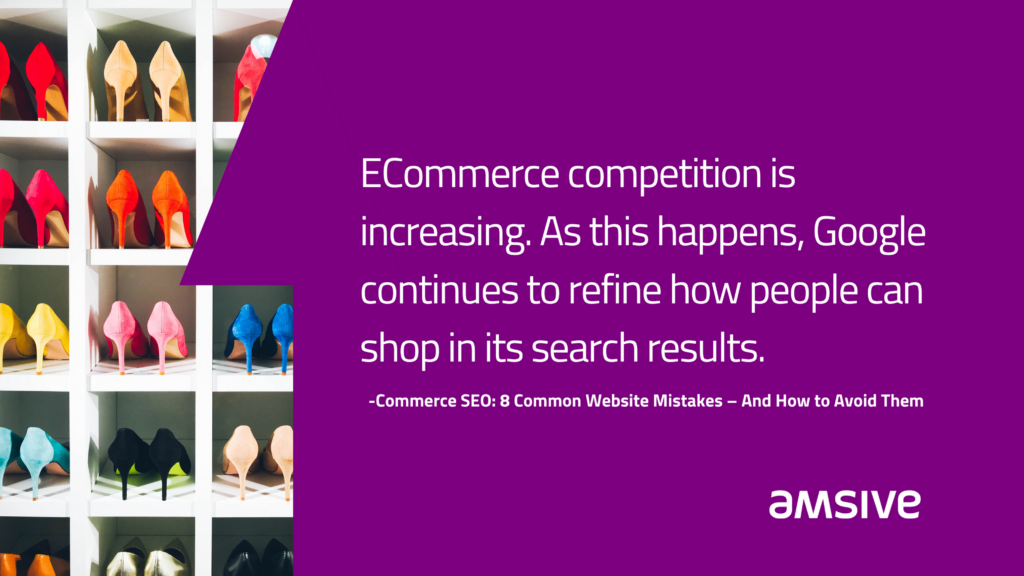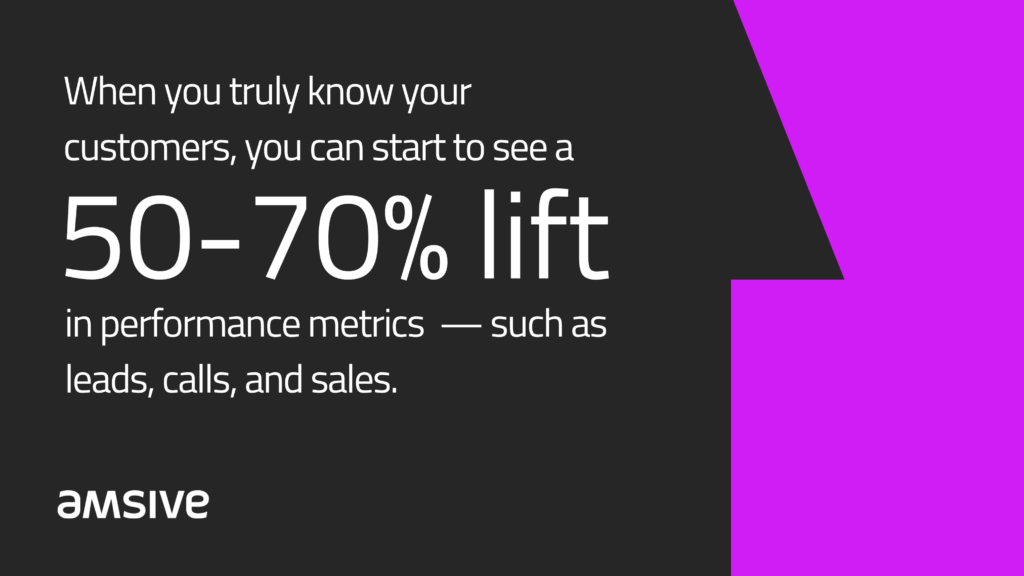As business ramps up in Q4, online retailers focus on immediate successes and sustainable solutions, and optimizing websites for search engines can answer both. Drive qualified traffic, increase conversions, and ultimately boost revenue with the right SEO strategy. Make sure yours is on track to make the most of holiday shopping and planning.
Jump To:
Having attended BrightonSEO’s eCommerce fringe conference, I was able to confirm the latest and greatest eCommerce SEO tactics start with a clear, robust foundation of elemental strategy. How strong is the SEO strategy for your eCommerce business? Is it able to support both immediate and long-term growth? From filters to reporting metrics and content to the customer journey, how does your strategy stack up? Let’s find out.
What is ecommerce SEO?
Ecommerce SEO focuses on the search engine optimization of online stores. This field within SEO is all about ensuring that when someone starts their buying journey via Google search (or another search platform), your ecommerce store is optimized to rank – and ultimately be chosen by users.
Are you fully explaining SEO’s ROI?
Tracking return on investment (ROI) has become critical as economic winds shift. As businesses look to reduce costs, both paid and organic channels must demonstrate their value. Paid media has clear ROI modeling through metrics like ROAS. However, quantifying organic search’s ROI can be seen as more nuanced since costs vary across content creation, development, and outsourcing. While universal ROI standards don’t exist in SEO, developing customized models for your business can convey the channel’s worth. An expert SEO team can help map out and communicate customized ROI models tailored to your business.
Remember, your audience is often non-SEO executives focused on revenue, customer acquisition costs, and cost savings. Speak their language to get all stakeholders aligned on SEO’s financial impact. Educate each stakeholder on how organic search supports overall business growth; with investment, they can reap the rewards.
How strong is your technical SEO foundation?
The technical foundation of your eCommerce website is weighted much higher than content sites. Optimizing for page speed is still important – less because it’s a ranking factor, but because it’s crucial to someone’s buying behavior. The stats still support that a faster site leads to more sales. If your site takes too long for a customer to get to their products or purchase, they’ll likely jump.
The technical insights shared are a good reminder to work into your audits and framework. Make sure the pages important to the business are being crawled and indexed. Don’t let Google be the one to pick your canonical. Fix duplication! Fix egregious errors. Make it easy for Google to rank your site by consolidating ranking signals. Don’t forget the importance of optimizing your sitemaps, especially for large sites.

Should you streamline your eCommerce strategy?
A good strategy shouldn’t be complicated. While the start of each strategy is subject to change based on the unique needs of your site, there are typically a few areas marketers look to:
- Gap analysis and creating new product or category pages
- Getting PDPs to rank better through clean-up (better content, removing duplication)
- Focusing on PLPs, especially if they’re in striking distance
Others may focus on pages that are best by organic revenue.
There isn’t a right or wrong way to start – rather, I think it’s important to start on a path that’s been thought through with an emphasis on scalability. This is where it’s important to talk to stakeholders and understand the business. What’s going to directly impact the business the quickest?
Are your filters fully optimized?
An optimized filter strategy is crucial for your eCommerce website. Don’t make the mistake of overlooking it. Not just for its ability to create new, long-tail keywords but also for those keywords being highly transactional terms due to their specificity.
In a practical sense, filter indexation is messy. You’re indexing tens of hundreds (if not thousands) of filters. This can open up your site to a wide range of technical implications. Many sites (especially big eCommerce sites) don’t always have access to the backend systems that allow them to easily create new filters, putting SEOs on the reliance of developer timelines. Not all filters need to be indexed. There may be unique instances where you don’t want to show Google a filter on your site, but you still want to give your customers access.
On our team at Amsive, we’ve been embarking on an intricate filter strategy for our client with over 100,000 SKUs. It was a relief to know that other websites also see long-lead teams for work to come to fruition. It’s a big undertaking that takes a lot of time and care.

How well do you know your SERPs?
Researching SERPs (search engine results pages) is important for creating new pages and optimizing existing pages. Many factors can impact SERPs, like Core Web Updates, intent shifts, Search Generative Experience (SGE), and other search engine updates.
Are you obsessed with your SERPs? For your primary terms, what is Google showing? Does your page match this intent? What are ranking competitors doing that you aren’t? One reason why we see traffic take a hit is when Google changes what it wants for a query’s results (e.g. going from informational to transactional).
Another area where we see eCommerce sites missing out is when they don’t have pages to match Google’s intent for a query (for example, we had a client who ranked with a blog post for a keyword, but Google surfaced more product pages. As a result, our client was missing out because it didn’t have a page Google wanted).
While other areas of your eCommerce website are important, organic search starts in the SERPs. Be aware of how they operate to set your sites up for success.
Is your customer journey complete?
As SEOs, sometimes we can jump right into our site audits and keyword research without stepping back to assess the customer, even beyond their organic search journey.
Vanity metrics are tricky, especially if they aren’t helping to tell a meaningful story. People are emotional beings, which impacts their shopping behaviors, good or bad. Knowing your audience and how they move through the funnel will be necessary to make your SEO strategy work more holistically with other channels. Consider audience work such as focus groups and surveys to stay abreast of customers (also leveraging information from social channels such as TikTok). Customer journey mapping is also a great way to garner new customer perspectives with your other marketing channels and sales teams.
Like having all stakeholders on the same page regarding reporting, it’s important that everyone is on the same page for who their customer is. If it’s important to your customer, it should be important to your business. Put your highest-value customers at the center of your strategy, including making the most of first-party data and digging in with the right agency data platform to build accurate models to scale growth.

Turn these eCommerce SEO insights into action.
ECommerce sites should regularly audit their SEO strategies for opportunities to improve organic visibility and revenue. This includes assessing site architecture, on-page elements, technical foundations, and analyzing SERP performance. Experts can then make data-led recommendations based on growth areas. Here’s where you can start today:
- Look at your current reporting metrics. Do they accurately represent your customer or your business? What are other areas you could be tracking but aren’t? Consider sharing your report with other stakeholders outside of SEO to gain new insights into questions that can be answered.
- If you haven’t done a technical audit in a while, pop open Search Console and see what’s going on. How are your sitemaps? Are any important pages not ranking? Your site may be technically sound and that’s ok – just make sure you’re aware of what’s happening.
- Identify a cadence for how often you’re assessing the SERPs. There’s tools that can help automate this process. Take note of the SERPs for your priority terms and decide if your target pages are still in line with what Google is surfacing.
- If you haven’t started on your filtered pages strategy, get that into your queue. Bring in partners like my team at Amsive to help! We have tons of experience under our belt. If you have undertaken filters, make sure you’re checking your search terms report in GA4 to identify potentially new pages to create.
- Does your content work in siloes, or does it work with your customer’s journey? Start mapping your customer’s journey through all stages of your site – from landing page to transaction. What are you missing? What can be improved?
The holiday shopping season is fast approaching, making Q4 a critical time for eCommerce businesses to drive revenue through improved SEO. By optimizing elements like technical foundations, reporting, SERP alignment, filters, and customer journeys, retailers can attract qualified organic traffic to boost conversions.
Assess your current strategy against these insights to identify gaps and opportunities. If needed, bring in an expert SEO agency to provide an objective audit of your website’s health and growth potential. Prioritize quick wins like fixing technical errors while planning long-term content and keywords strategies.
With the right focus on core SEO fundamentals, eCommerce sites can finish the year strong. Users are searching for products more than ever, so ensure your website meets their intent. Capture your share of online holiday spending through an elevated organic search strategy. Implement these tips to set your business up for SEO success now and into 2024. As eCommerce competition increases, learn how to avoid common eCommerce SEO mistakes, or let’s talk about achieving more for your marketing — and your business.






